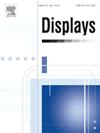CIFTC-Net: Cross information fusion network with transformer and CNN for polyp segmentation
IF 3.7
2区 工程技术
Q1 COMPUTER SCIENCE, HARDWARE & ARCHITECTURE
引用次数: 0
Abstract
Polyp segmentation plays a crucial role in the early diagnosis and treatment of colorectal cancer, which is the third most common cancer worldwide. Despite remarkable successes achieved by recent deep learning-related works, accurate segmentation of polyps remains challenging due to the diversity in their shapes, sizes, appearances, and other factors. To address these problems, a novel cross information fusion network with Transformer and convolutional neural network (CNN) for polyp segmentation, named CIFTC-Net, is proposed to improve the segmentation performance of colon polyps. In particular, a dual-branch encoder with Pyramid Vision Transformer (PVT) and ResNet50 is employed to take full advantage of both the global semantic information and local spatial features to enhance the feature representation ability. To effectively fuse the two types of features, a new global–local feature fusion (GLFF) module is designed. Additionally, in the PVT branch, a multi-scale feature integration (MSFI) module is introduced to fuse multi-scale features adaptively. At the bottom of the model, a multi-scale atrous pyramid bridging (MSAPB) module is proposed to achieve rich and robust multi-level features and improve the segmentation accuracy. Experimental results on four public polyp segmentation datasets demonstrate that CIFTC-Net surpasses current state-of-the-art methods across various metrics, showcasing its superiority in segmentation accuracy, generalization ability, and handling of complex images.
CIFTC-Net:用于息肉分割的带有变压器和 CNN 的交叉信息融合网络
息肉是全球第三大常见癌症,息肉分割在结直肠癌的早期诊断和治疗中起着至关重要的作用。尽管最近的深度学习相关研究取得了令人瞩目的成就,但由于息肉的形状、大小、外观和其他因素的多样性,对息肉进行精确分割仍然具有挑战性。为解决这些问题,我们提出了一种用于息肉分割的新型交叉信息融合网络,该网络名为 CIFTC-Net,旨在提高结肠息肉的分割性能。其中,采用了 Pyramid Vision Transformer(PVT)和 ResNet50 的双分支编码器,充分利用全局语义信息和局部空间特征来增强特征表示能力。为了有效融合这两类特征,设计了一个新的全局-局部特征融合(GLFF)模块。此外,在 PVT 分支中还引入了多尺度特征融合(MSFI)模块,用于自适应地融合多尺度特征。在模型的底层,提出了多尺度无规金字塔桥接(MSAPB)模块,以实现丰富而稳健的多层次特征,提高分割精度。在四个公共息肉分割数据集上的实验结果表明,CIFTC-Net 在各种指标上都超越了目前最先进的方法,展示了其在分割精度、泛化能力和处理复杂图像方面的优势。
本文章由计算机程序翻译,如有差异,请以英文原文为准。
求助全文
约1分钟内获得全文
求助全文
来源期刊

Displays
工程技术-工程:电子与电气
CiteScore
4.60
自引率
25.60%
发文量
138
审稿时长
92 days
期刊介绍:
Displays is the international journal covering the research and development of display technology, its effective presentation and perception of information, and applications and systems including display-human interface.
Technical papers on practical developments in Displays technology provide an effective channel to promote greater understanding and cross-fertilization across the diverse disciplines of the Displays community. Original research papers solving ergonomics issues at the display-human interface advance effective presentation of information. Tutorial papers covering fundamentals intended for display technologies and human factor engineers new to the field will also occasionally featured.
 求助内容:
求助内容: 应助结果提醒方式:
应助结果提醒方式:


